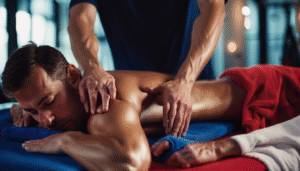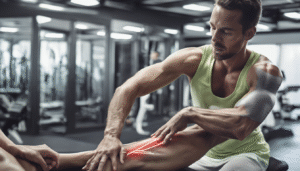You’re onto something amazing, pairing exercise and massage—they’re truly best buds for your body! Exercise builds strength and elevates circulation, while massage eases tension and speeds up recovery by enhancing blood flow. Together, they cut muscle soreness by about 30% and improve flexibility.
Schedule a post-workout massage within two hours for maximum benefits, and watch injuries drop as tightness fades. Stick around to uncover even more game-changing tips for your fitness path!
Key Takeaways
- Exercise and massage work synergistically to boost circulation and speed up muscle recovery.
- Massage reduces post-workout soreness by about 30%, enhancing exercise benefits.
- Combining both lowers injury risks by easing muscle tightness and improving flexibility.
- Scheduling massages post-workout optimizes recovery and relaxes tense muscles effectively.
- Together, they promote psychological well-being through endorphin and oxytocin release.
Exploring the Bond Between Exercise and Massage
While you might think of exercise and massage as separate wellness practices, they’re deeply connected in ways that can enhance your health and happiness. Together, they create a powerful benefits collaboration, improving your physical and mental well-being.
When you exercise, you strengthen muscles and elevate circulation, and massage builds on this by easing tension and improving flexibility. This duo isn’t just about your body—it’s crucial for psychological recovery too. Massage also promotes the production of endorphins and oxytocin, the love hormone, enhancing feelings of closeness and trust.
Additionally, combining both practices can boost blood flow, aiding faster recovery by increasing oxygen delivery to damaged tissues.
Exercise floods you with endorphins, while massage deepens relaxation and lifts your mood. As part of a supportive community, you’ll feel a sense of belonging by embracing both.
How Massage Boosts Recovery After Workouts
 After an intense workout, a massage can significantly speed up muscle damage repair by enhancing circulation and nutrient delivery to your tissues. It’s also a powerful tool for slashing post-exercise soreness, cutting down delayed-onset muscle soreness by about 30% in the critical 24 to 72 hours after exercise. Additionally, therapeutic massage focuses on specific areas of concern, which can further enhance recovery by addressing muscle tension and discomfort.
After an intense workout, a massage can significantly speed up muscle damage repair by enhancing circulation and nutrient delivery to your tissues. It’s also a powerful tool for slashing post-exercise soreness, cutting down delayed-onset muscle soreness by about 30% in the critical 24 to 72 hours after exercise. Additionally, therapeutic massage focuses on specific areas of concern, which can further enhance recovery by addressing muscle tension and discomfort.
Give massage a try to feel the difference in your recovery and get back to training sooner!
Additionally, studies show that massage significantly reduces serum creatine kinase levels, indicating a decrease in muscle damage markers.
Speeding Muscle Damage Repair
Muscle damage is inevitable as you push your body through intense workouts, but massage can be your secret weapon for faster recovery.
When you join our fitness community, you’ll uncover how massage elevates muscle repair by applying mechanical forces that clear inflammatory cells and improve fiber regeneration. It’s a game-changer for inflammation reduction, as compression helps remove neutrophils and cytokines, speeding up healing. Moreover, research shows that massage can offer small but significant improvements in flexibility.
Additionally, the practice of reflexology can also enhance relaxation and overall well-being, complementing your recovery efforts.
Dive into this recovery hack with us!
Massage also aligns muscle fibers for peak performance and increases blood and lymph flow to flush out waste. Plus, immediate cyclic compression cuts down swelling.
Adopt this practical tool to mend muscle damage fast, ensuring you’re always ready for the next challenge with your workout tribe!
Reducing Post-Exercise Soreness
Massage can help you overcome muscle damage faster, and it’s also a powerful ally in tackling post-exercise soreness. You’re not alone in dreading delayed-onset muscle soreness (DOMS); we’ve got your back with proven soreness management strategies.
Massage enhances recovery by improving blood flow and reducing edema, offering relief for up to 72 hours. Research also shows that massage significantly lowers circulating creatine kinase (CK) levels, a key indicator of muscle damage, aiding in quicker recovery. Additionally, targeted pressure on reflexology pressure points can enhance the overall benefits of massage by stimulating the body’s natural healing mechanisms.
Here’s how to increase benefits with massage frequency:
- Timing Matters: Schedule a 20-30 minute massage within 2 hours post-workout for best effect.
- Consistent Relief: Regular sessions can cut DOMS by 13%, easing pain.
- Feel the Increase: Enjoy a 16% rise in endorphins, reducing fatigue.
Join our community—let’s recover stronger in unison with massage as your trusted partner!
Enhancing Flexibility Through Massage Techniques
 Countless people seek ways to improve their flexibility, and massage techniques offer a robust solution. You’re not alone in wanting to move more freely, and with targeted strategies, you can achieve that.
Countless people seek ways to improve their flexibility, and massage techniques offer a robust solution. You’re not alone in wanting to move more freely, and with targeted strategies, you can achieve that.
Focus on muscle groups like the pectoralis major or trapezius using specific massage methods—plucking, pressing, pushing—to release tension and increase your range of motion. These approaches, backed by studies showing a 7% flexibility increase, work wonders. Medical massage specifically targets tight muscles and connective tissue to help restore natural joint movement.
Target muscles like pectoralis major with massage techniques—plucking, pressing, pushing—to ease tension and boost flexibility by 7%, as studies confirm.
Feel your muscles elongate and stiffness fade as circulation improves with each session. Whether you’re an athlete or just aiming for better joint mobility, regular massage with a muscle focus can prevent injuries and improve tissue elasticity.
Join this community of movers—start today and stretch your limits with every knead!
Reducing Muscle Soreness With Combined Approaches
While flexibility gains from massage are impressive, you can also tackle muscle soreness with a powerful blend of exercise and targeted massage techniques.
As part of our fitness family, you know that combining these approaches improves muscle recovery by reducing delayed-onset muscle soreness (DOMS) by about 30%. Research supports that massage can significantly alleviate DOMS when applied at the right time and in the right way.
To optimize results, try these practical steps:
- Schedule Sessions: For peak efficacy, plan 10-30 minute massage techniques like effleurage and petrissage 48 hours after your workout.
- Pair with Light Exercise: Incorporate gentle movement to elevate circulation alongside massage for better muscle recovery.
- Track Progress: Monitor soreness levels to see how your body responds and adjust as needed.
Together, we’ve got this—blend these methods and feel the difference!
The Role of Massage in Preventing Sports Injuries
Hey, if you’re serious about staying injury-free, incorporating sports massage into your routine can be a game-changer by enhancing muscle flexibility.
You’ll notice how it works on tight muscle fibers, making them more pliable and cutting down the risks of tension-related injuries.
Start adding regular sessions to your training plan, and you’ll feel the difference in how your body moves and responds!
Moreover, research shows that massage therapy can protect against impaired endothelial function after exertion-induced muscle injury, supporting overall vascular health (protects endothelial function).
Enhancing Muscle Flexibility
As you endeavor to improve your athletic performance, incorporating massage into your routine can significantly elevate your muscle flexibility.
By increasing muscle compliance and joint mobility, massage helps you move more freely and powerfully, connecting you with a community of athletes who prioritize recovery.
Regular sessions break down scar tissue, offering immediate flexibility gains and long-term relief from stiffness. Additionally, massage stimulates blood flow, which promotes faster healing of muscle tissues after intense workouts.
Here’s how massage transforms your flexibility:
- Deep Tissue Techniques: Target tight areas to improve muscle compliance.
- Myofascial Release: Enhances joint mobility for smoother motion.
- Trigger Point Therapy: Reduces adhesions for lasting flexibility.
Embrace massage as your go-to tool.
You’ll notice significant improvements in range of motion, fitting right in with dedicated peers.
Make it a habit, and watch your body thrive!
Reducing Tension Risks
Since you’re pushing your limits in training, integrating sports massage into your routine can be a game-changer for reducing tension risks and preventing injuries.
As part of our fitness community, you’ll find that regular massage offers powerful tension reduction by easing muscle tightness and relaxing soft tissues, lowering the risk of strains or spasms. It optimizes your biomechanics for safer movement, a key factor in injury prevention.
Beyond physical benefits, massage enhances blood flow and neuromuscular control, helping you recover faster and avoid overuse issues. This improved circulation delivers vital nutrients to muscles, supporting muscle health.
It even calms your mind, sharpening focus to prevent errors during performance.
Synergistic Benefits for Low Back Pain Relief
 While low back pain can be persistent and frustrating, combining exercise with massage offers a powerful solution to ease discomfort.
While low back pain can be persistent and frustrating, combining exercise with massage offers a powerful solution to ease discomfort.
You’re not alone in this struggle; together, we can tackle it with strategies that enhance pain management and treatment efficacy. This dynamic duo amplifies relief by targeting both muscles and mobility.
Consider these synergistic benefits to join our community of recovery:
- Reduced Pain: You’ll experience significant pain reduction compared to standalone methods.
- Enhanced Functionality: Improve your daily movements with better outcomes.
- Increased Flexibility: Gain lumbar flexibility through deep tissue massage and stretching.
Research shows that combining Swedish massage with exercise therapy significantly outperforms exercise alone in reducing pain and disability in elderly patients with low back pain, offering a promising integrative approach—Swedish massage benefits.
Start this expedition with us! Pair exercise and massage to recover faster, feel stronger, and be more connected in your pain relief efforts.
Understanding the Science of Massage and Exercise
Let’s investigate the fascinating science behind massage and exercise to build on the relief strategies for low back pain we’ve discussed.
Immerse yourself in muscle physiology with us—massage improves blood circulation, reduces muscle soreness, and lowers damage markers like serum creatine kinase. You’ll recover faster and feel ready to tackle your next workout.
Beyond the physical, massage has enormous psychological benefits. It reduces stress, lifts mood, sharpens focus, and makes you part of a community that values holistic wellness.
Massage transforms more than muscles—it reduces stress, boosts mood, and enhances focus, connecting you to a holistic wellness community.
It’s not just about muscles; it’s about feeling great mentally, too. Adopt this powerful duo to elevate recovery and well-being.
Stick with us, and you’ll be more than just exercising—you’ll thrive in a supportive, health-focused tribe.
Practical Tips for Integrating Massage Into Fitness Routines
Hey, let’s get smart about weaving massage into your fitness routine by nailing the timing of your sessions.
Schedule your massages right after those grueling workouts to enhance recovery, and pick the right type, like deep tissue for intense muscle work or myofascial release for better flexibility.
Trust me, syncing these elements with your exercise plan will make a massive difference in how you feel and perform!
Timing Massage Sessions
As you refine your fitness routine, timing your massage sessions can significantly improve performance and recovery.
You’re part of a community that values peak fitness, and integrating a pre- or post-workout massage can enhance your game. Schedule strategically to increase blood flow before exercise or ease soreness after.
Here’s how to time it right:
- Pre-Workout Massage: Get a quick session to improve circulation and prep muscles.
- Post-Workout Massage: Book within two hours post-exercise for ideal recovery from DOMS.
- Post-Massage Activity: Stick to light yoga or walking right after; delay intense workouts for 24 hours.
Let’s sync massage with movement to amplify your gains together!
Choosing Massage Types
While timing your massage sessions is crucial, selecting the correct type of massage can improve your fitness routine to new heights. Immerse yourself in the massage benefits by picking a style that suits your needs.
Try Deep Tissue for intense tension relief or Swedish for complete relaxation. If you’re an athlete, Sports Massage elevates performance and recovery.
Investigate massage techniques like effleurage to warm up muscles or petrissage to knead out knots. You’re part of a community that values wellness, so personalize your choice—combine modalities or consult a therapist to target specific issues.
Whether it’s pre-event prep or post-workout recovery, the proper massage keeps you at your peak. Let’s prioritize recovery together and feel unstoppable!
Challenges and Accessibility of Massage Therapy
Though massage therapy offers incredible benefits for pain relief and stress reduction, you’ll often find significant hurdles standing in the way of accessing it.
While massage therapy provides remarkable relief for pain and stress, numerous obstacles often prevent you from easily accessing its benefits.
Accessibility barriers like high costs and limited insurance coverage can stop you from getting the care you need. You’re not alone in facing these struggles, and together, we can push for change.
Consider these challenges:
- Cost Concerns – High out-of-pocket expenses and copays deter many, particularly seniors.
- Geographic Limits – Underserved areas lack licensed therapists, making access challenging.
- Perception Issues – Many view massage as a luxury, not a health necessity.
Let’s advocate for better integration into healthcare. You deserve this support, so don’t hesitate to seek resources and community solutions to overcome these barriers.
What Lies Ahead for Massage in Athletic Recovery
Even teammate, despite challenges in accessing massage therapy, you can look forward to exciting advancements in its support of athletic recovery.
Imagine energy integration, like Reiki, paired with massage to enhance your holistic healing. With customized treatments tailored to your distinct needs, you’ll recover faster and perform stronger.
Thanks to technological advancements, AI and smart devices track your progress and optimize every session.
Can’t get to a spa? No worries—mobile services bring recovery right to your doorstep or gym. Plus, cryotherapy benefits, paired with infrared therapy, slash inflammation and speed healing.
You’re part of a forward-thinking crew embracing these tools. Immerse yourself, stay ahead, and let’s transform athletic recovery alongside these game-changing innovations!
Frequently Asked Questions
Does Massage Improve Mental Health During Exercise?
You’ll find that massage enhances your mental health during exercise. Accept mindfulness techniques to stay present and support heartfelt recovery with each session. You’re not alone—join others in accessing this powerful, shared benefit!
Can Massage Reduce Exercise-Induced Anxiety?
Imagine anxiety melting like ice in a furnace! You can find anxiety relief through massage, gaining psychological support to conquer exercise-induced fears. Welcome this powerful tool, join the calm crew, and thrive together!
How Does Massage Affect Workout Motivation?
Hey, you’ve got this! Uncover how massage benefits increase workout motivation. Feel uplifted with reduced stress and improved mood. Speed up workout recovery, join our crew, and stay driven with consistent, powerful sessions!
Is Self-Massage as Effective as Professional?
Are you wondering if self-massage techniques offer comparable benefits to professional ones? You’re not alone! While you can target pain anytime, pros offer more profound relief.
Blend both for your wellness crew—don’t skip that expert touch!
Does Massage Impact Exercise-Related Sleep Quality?
Picture sleep as your silent healer, a nightly hug. Massage enhances sleep recovery by easing muscle relaxation. Join this restorative circle, and let massage guide you to deeper rest with every touch.
Conclusion
Hey, you’ve got the power to transform your fitness expedition by blending exercise and massage! Think of them as twin flames, sparking recovery and strength in your muscles like wildfire. Don’t just push through pain—schedule a massage to melt away tension and enhance flexibility.
Make it a habit, even if it’s just self-massage with a foam roller. Your body’s a temple; treat it right, and it’ll carry you to new heights!

